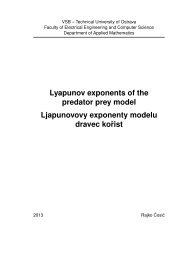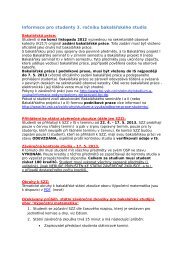The Boundary Element Method for the Helmholtz Equation ... - FEI VÅ B
The Boundary Element Method for the Helmholtz Equation ... - FEI VÅ B
The Boundary Element Method for the Helmholtz Equation ... - FEI VÅ B
Create successful ePaper yourself
Turn your PDF publications into a flip-book with our unique Google optimized e-Paper software.
13In <strong>the</strong> previous paragraphs we showed how to generalize <strong>the</strong> concept of a normal derivativeof a function in H 1 (Ω, ∆ + κ 2 ) with a bounded domain Ω. However, it is also possibleto introduce <strong>the</strong> Neumann trace operator γ 1 <strong>for</strong> functions defined on an unbounded domain.Since <strong>the</strong> trace is only dependable on <strong>the</strong> behaviour of <strong>the</strong> function in <strong>the</strong> vicinityof <strong>the</strong> boundary, we haveγ 1 : H 1 loc (Ω, ∆ + κ2 ) → H −1/2 (∂Ω).Because H 1 loc (Ω, ∆+κ2 ) coincides with H 1 (Ω, ∆+κ 2 ) <strong>for</strong> bounded domains, <strong>the</strong> precedingdefinitions agree with this concept. For a more detailed treatment of this topis see [15],Section 2.7.Note that <strong>for</strong> a function u ∈ H 2 (Ω), whereH 2 (Ω) := u ∈ L 2 (Ω): D α u ∈ L 2 (Ω) <strong>for</strong> |α| ≤ 2 ,we have⟨γ 1 u, γ 0 v⟩ =dk=1∂Ωγ 0 ∂u(x)n k (x)γ 0 ∂uv(x) ds =∂x k ∂Ω ∂n (x)γ0 v(x) ds.









